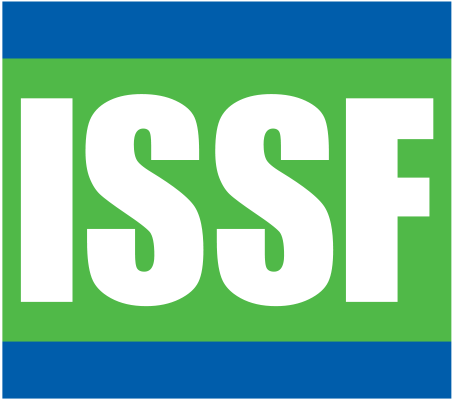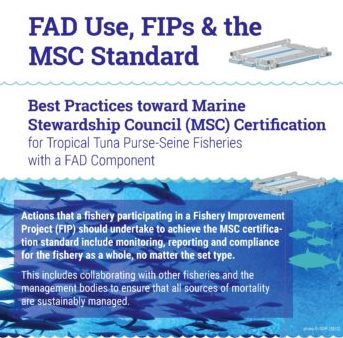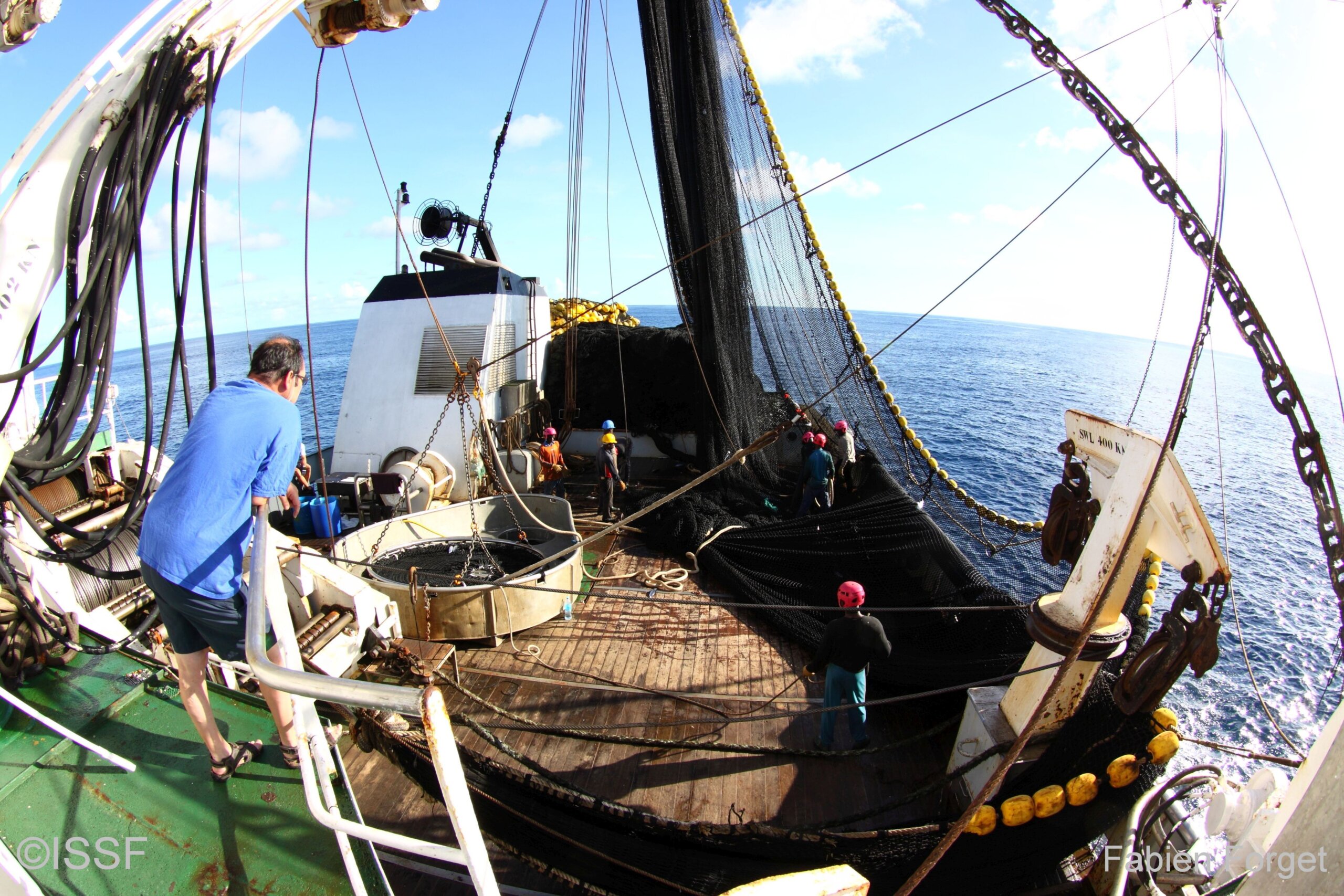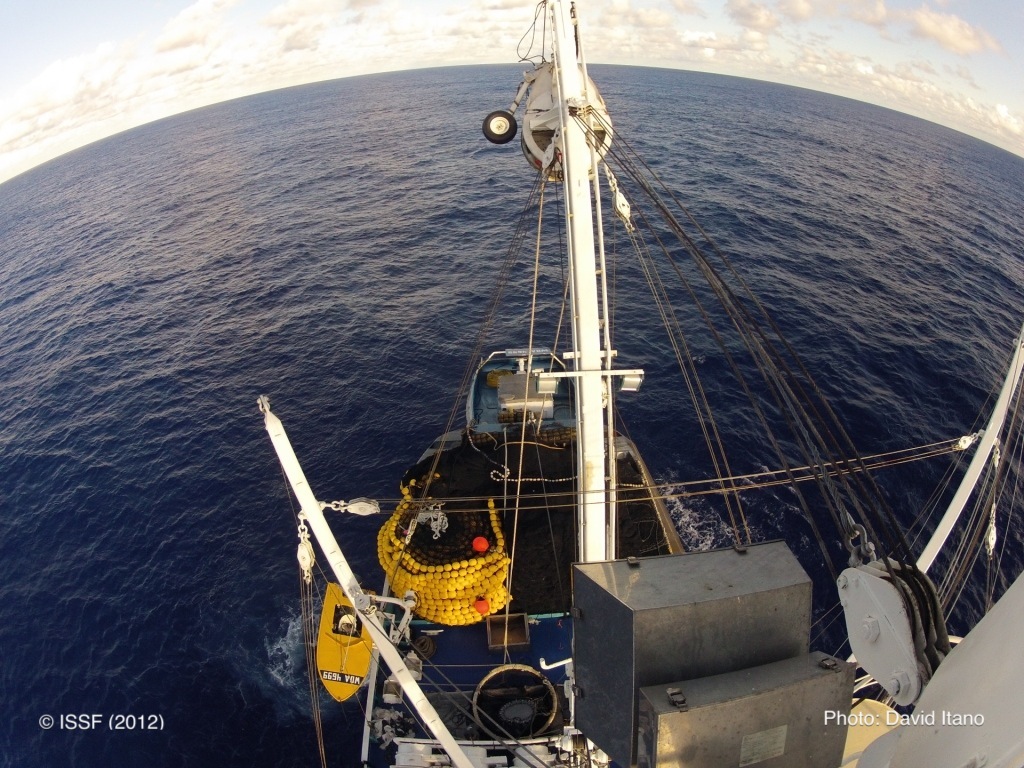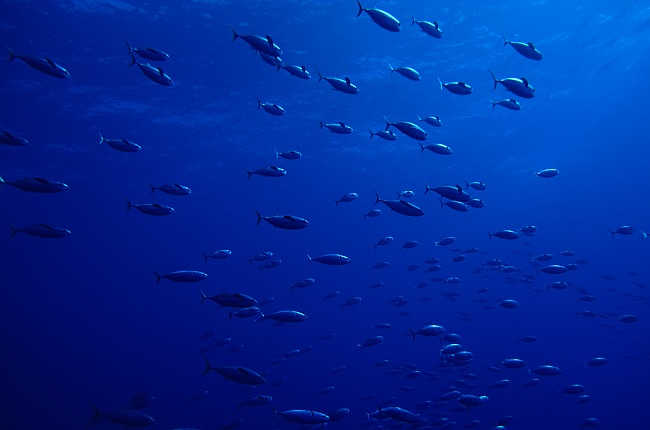
FIPs FAQs
Learn about the value of Fishery Improvement Projects (FIPs) and ISSF resources and support for FIP participants.
If you have questions about ISSF and fishery improvement projects (FIPs) that aren’t answered on the site, use our FIP Support Form.
The ISSF Glossary defines a FIP (Fishery Improvement Project) as "an alliance of stakeholders — tuna retailers, processors, producers, and/or catchers — that uses the power of the private sector and markets to resolve problems within a specific fishery or improve some specific aspect that requires attention, incentivizing positive changes toward sustainability of the fishery. The FIP identifies data that need to be collected, sets the priority actions that should be undertaken, and then oversees the action plan adopted." For more on defining a FIP, see www.fisheryprogress.org/resources/glossary. Learn more.
As your first step in self-assessment, check out the ISSF report "ISSF 2024-06: An Evaluation of the Sustainability of Global Tuna Stocks Relative to Marine Stewardship Council Criteria." It offers snapshots of the current status of the stocks, and of the strengths and weaknesses of each RFMO. Then see our report "ISSF 2018-16: A Pre-Assessment of the Sustainability of Global Tuna Fisheries Relative to Marine Stewardship Council Criteria: Principle 2." Based on Marine Stewardship Council Principle 2, which considers stocks and ecosystems, the report evaluates the sustainability of 166 stock and fishing gear combinations. Also see ISSF’s Interactive Stock Status Tool, which enables you to visualize current and historical data from our authoritative report, "Status of the World Fisheries for Tuna," often known as "The Status of the Stocks." Learn more.
ISSF is the only organization worldwide with tuna sustainability as its primary focus. Our strategic plan directs us to help all tuna fisheries — regardless of fishing method, target tuna species, or location — to be able to meet the MSC certification standards, without conditions. For those reasons, our objectives align closely with those of any tuna fishery that forms a FIP as it seeks Marine Stewardship Council (MSC) certification. Learn more.
What can ISSF do for your FIP?
Whether you’re just considering a FIP effort or are well along in the process, you have unlimited access to ISSF’s comprehensive online library of resources. You’ll find databases, reports, best-practice guides, and advocacy statements that can support you as you carry out your workplan. Many of our online resources are available nowhere else — for example, our ProActive Vessel Register, interactive "Status of the Stocks" tool, and at-sea best practice guides for fishers, which are available in multiple languages and for a variety of gear types. You can match ISSF resources to FIP needs — based on the Marine Stewardship Council Performance Indicator(s) the FIP is focusing on improving — using our interactive tool, FIP Resources Finder. Learn more.
Our efforts are designed to support — not replace — the assistance your FIP may receive from other NGO partners. That means:
- We do not fund, manage, organize, coordinate, or govern fishery improvement projects.
- We do not author FIP action plans. Instead, we provide access to a comprehensive kit of unique resources and services. At the same time, we encourage cooperation, collaboration, and partnership among neighboring or overlapping FIPs wherever it’s appropriate.
A large portion of the world’s tuna catch is harvested by purse-seine fisheries that rely on FADs. None of them so far has received MSC certification. We believe that they can achieve certification by adopting best practices for FADs, and we support their efforts to meet MSC criteria. In fact, see ISSF 2020-11: Recommended Best Practices for Tropical Tuna Purse Seine Fisheries in Transition to MSC Certification, with Emphasis on FADs for a detailed look at the best practices we recommend. Learn more.
Much of what we offer is relevant for handline, pole-and-line, longline, and purse seine fisheries of every scale, anywhere in the world. We continually work to present user-friendly online resources for FIPs of all types, and to keep FIP implementers and MSC assessors aware of the assets we make available. Our current levels of staffing and funding compel us to focus our direct outreach on FIPs whose stakeholders include ISSF participating companies and/or vessels listed in our ProActive Vessel Register. Learn more.
Send us your request or question about ISSF FIP support. Learn more.
FIP RESOURCES
Sustainable Fishing Guides
Visit the ISSF Guidebooks site for online and downloadable guides for tuna skippers and observers in purse-seine, pole-and-line, and longline fisheries who want to fish more sustainably.
